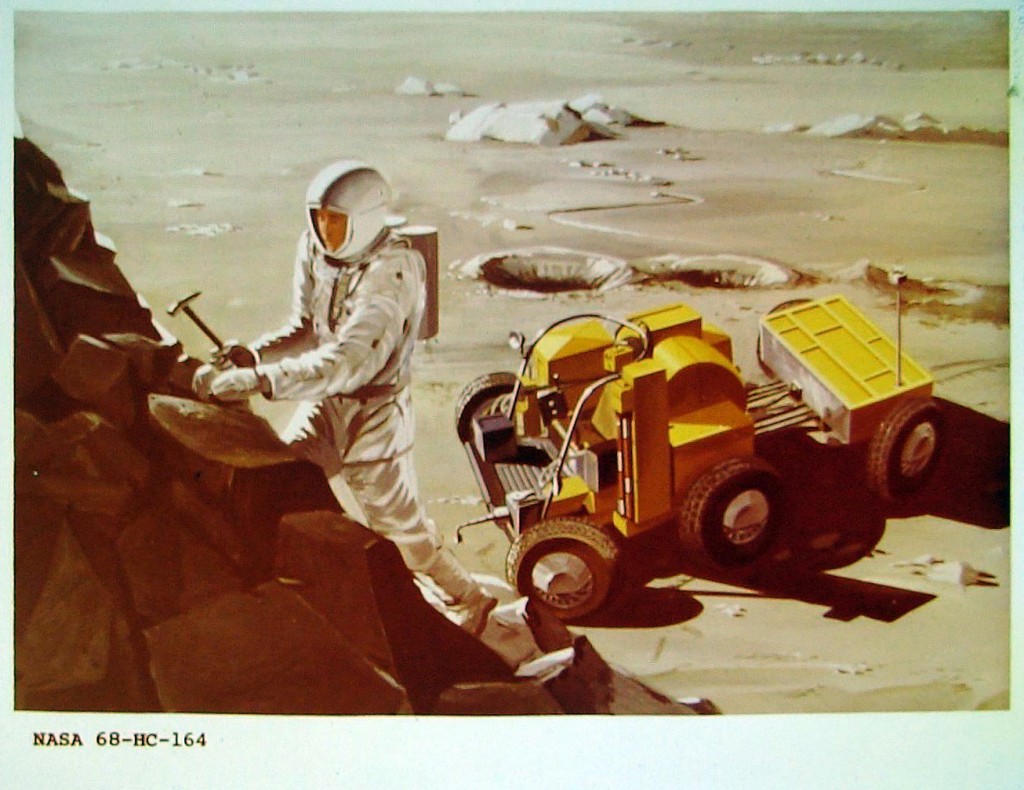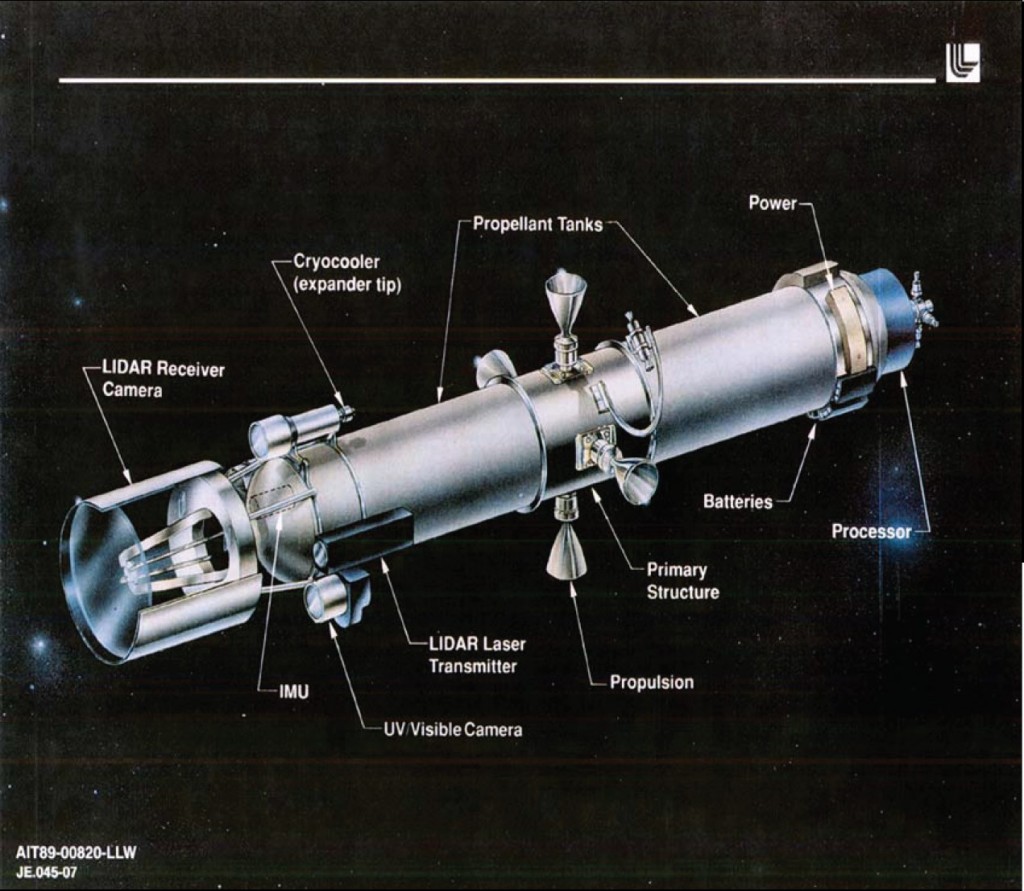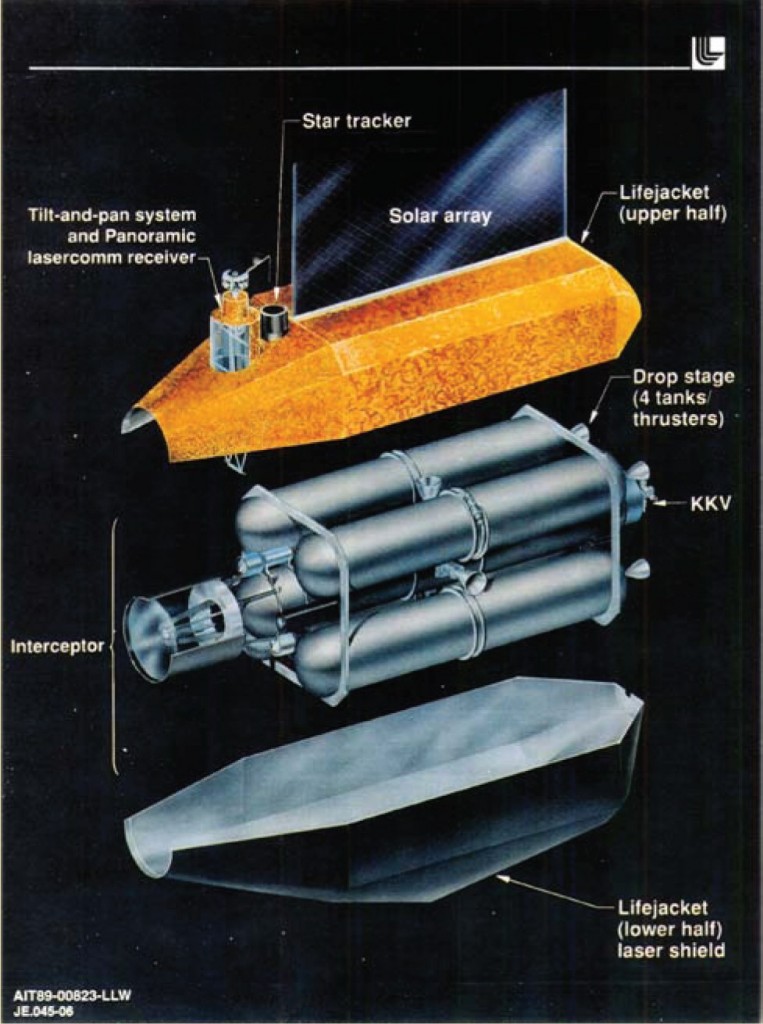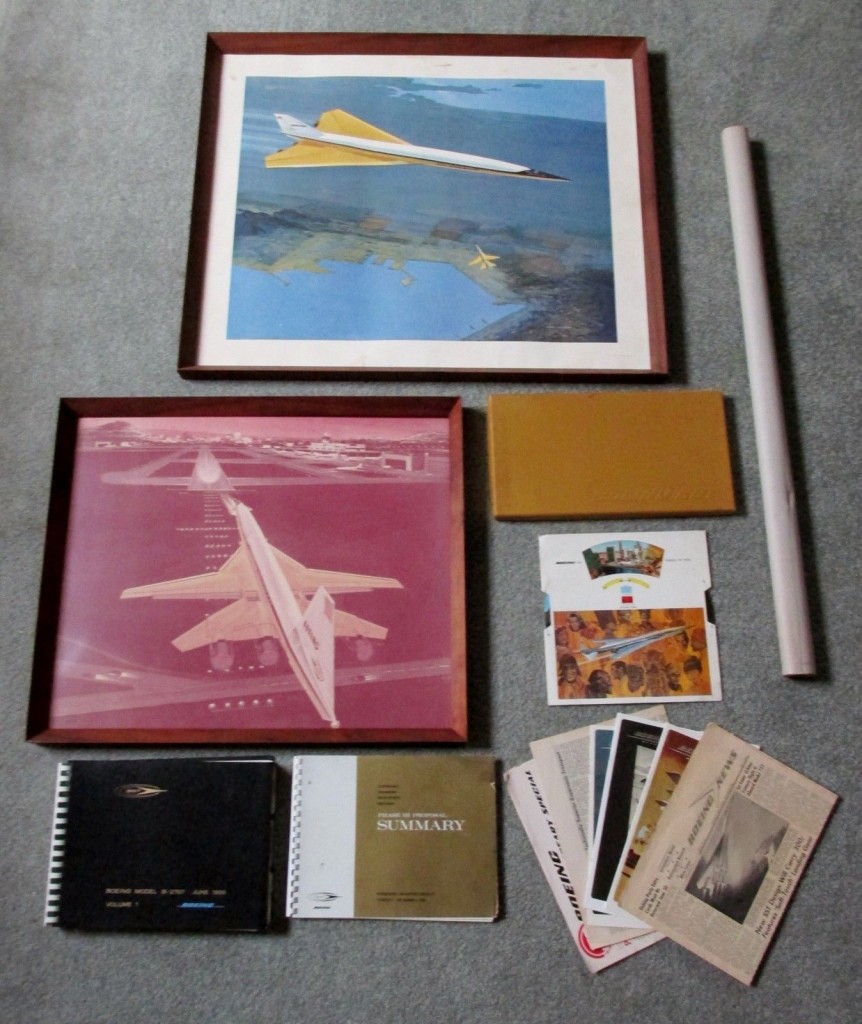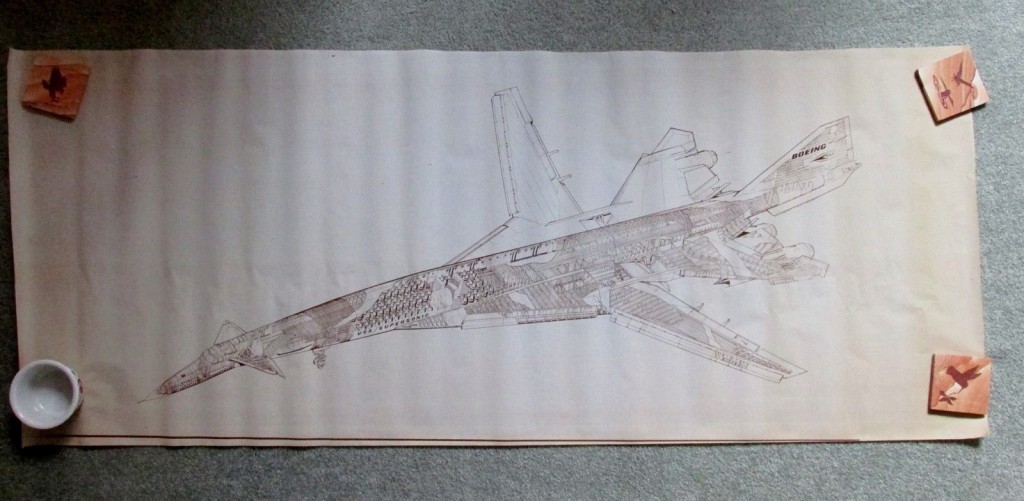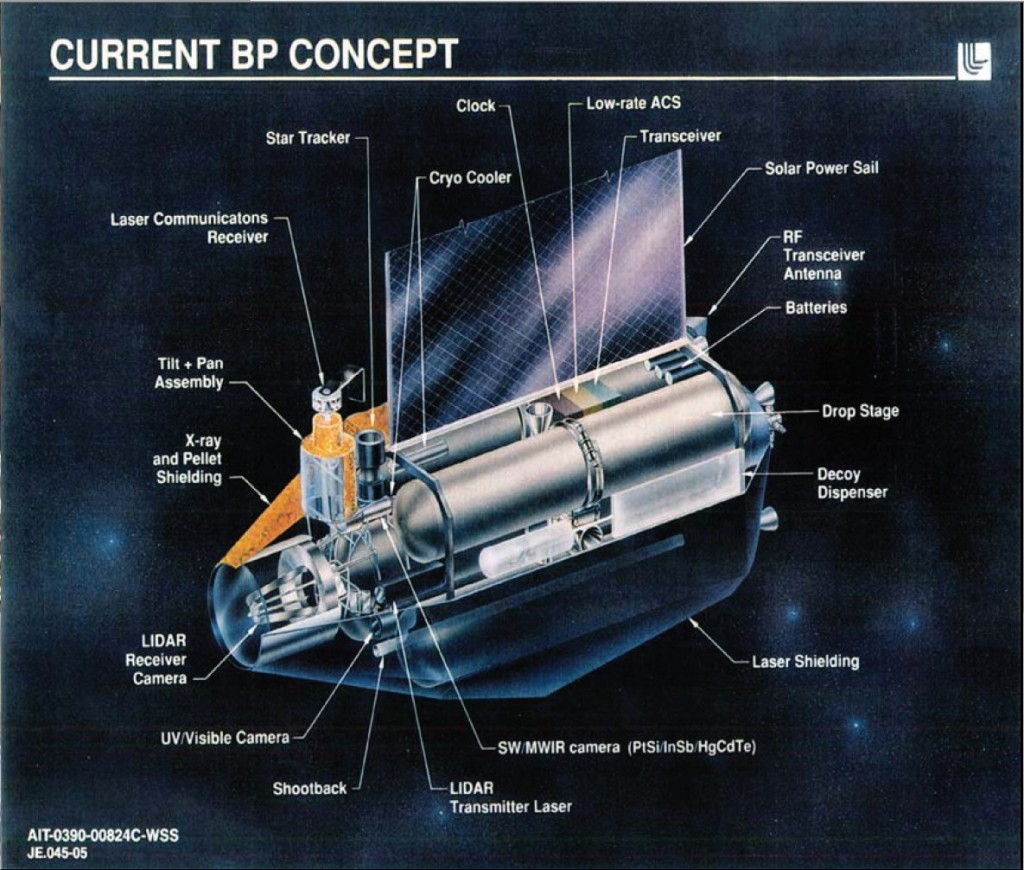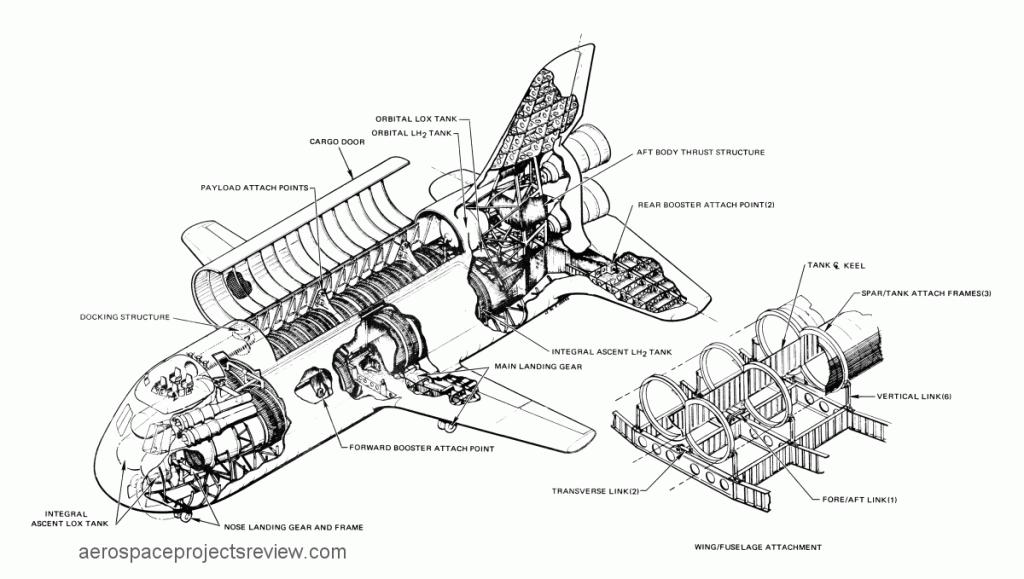A photo of a bit of NASA concept art, found on eBay. Dating from 1968, this shows an astronaut doing some geology (“seleneology?”) with a six-wheeled rover and a remarkably slim space suit.
LLNL artwork depicting the hit-to-kill terminal stage of the Brilliant Pebbles, sans the booster drop-stages. It does not seem to have a go-forward thruster; that would seem to have been provided by the boosters. What it does have is a fair amount of divert capability provided by the thrusters mounted at what should be the center of gravity.
While dimensions are unknown with any certainty, this would be a fairly small system. The kill vehicle – which in this case is somewhat difficult to distinguish from the propulsion system – had a mass goal of only 2.5 kilograms (according to THIS), while the booster was to mass about 100 kilograms. THIS source said the vehicles were about one meter long.
For those of you following along with my email-listing updates regarding the Boeing 2707 eBay listing and how to get in on it… it has now closed. The package of proposal books, art & diagram showed up today, and now the process of scanning begins.
For those of y’all reading this going “WTF?” and wondering why you don’t know what I’m yapping about and why you’re not on the list to receive a gigabyte or so of SST stuff… probably has something to do with you not being on the emailing list.
Lawrence Livermore National Lab artwork of the Brilliant Pebbles anti-missile satellite within its protective “cocoon.” Compare to artwork HERE. Dimensions remain elusive.
Take this for what it’s worth:
PLA dreams of turning moon into Death Star, says expert
An expert from the China National Space Administration’s Lunar Exploration Programme Center… added that the moon is the Earth’s only natural satellite, and it can be transformed into a deadly weapon. Like the Death Star in Star Wars, the moon could hypothetically be used as a military battle station and ballistic missiles could be launched against any military target on Earth.
Various weapons testing sites could also be established on the moon, the source said.
Welcome to Project Horizon V 2.0.
For those unaware, Project Horizon was a 1959 US Army study of a moon base for military purposes. Included in that was the use of the moon as a missile base. The idea is not *entirely* ludicrous: a missile base on the moon would be several days away from a strike launched from Earth. So if Nation A launched a first strike on Nation B and Nation B has a lunar base, then Nation A can expect a rain of ruin from the moon a little later. However, the US decided that Polaris missile subs were cheaper.
Just a reminder…
After hiatus, I am again offering cyanotype blueprints of various aerospace subjects on paper. These include the V-2, the Saturn Ib and V, the NERVA nuclear rocket, the Super Hustler, and many more.What says “Merry Christmas” better than a gift of a hand-made, awesome-looking large format cyanotype blueprint of a launch vehicle or nuclear bombardment system?
See the complete list here:
http://www.aerospaceprojectsreview.com/catalog/cyan.htm
And while I’m not at liberty to go into the specifics, I recently provided a number of these to a certain ongoing major TV series to be used as set dressing/props. The episodes will air sometime early next spring, I believe. They should look marvelous…
A photo of dubious quality showing Phil Bono of Douglas standing next to a surprisingly large display model of the ICARUS/Ithacus intercontinental transport rocket. The photo was taken at the “Travel ’67 Show” at the Cow Palace convention center in San Fransisco. According to poster art found on eBay, this was held Feb 24 – Mar 5 of 1967. I haven’t been able to find out more about it, though it would seem that it must have been a convention about the future of transport. One can speculate that the facility was filled with representations of supersonic transports, monorails, high-speed trains, sleek cars with ridiculous fins…
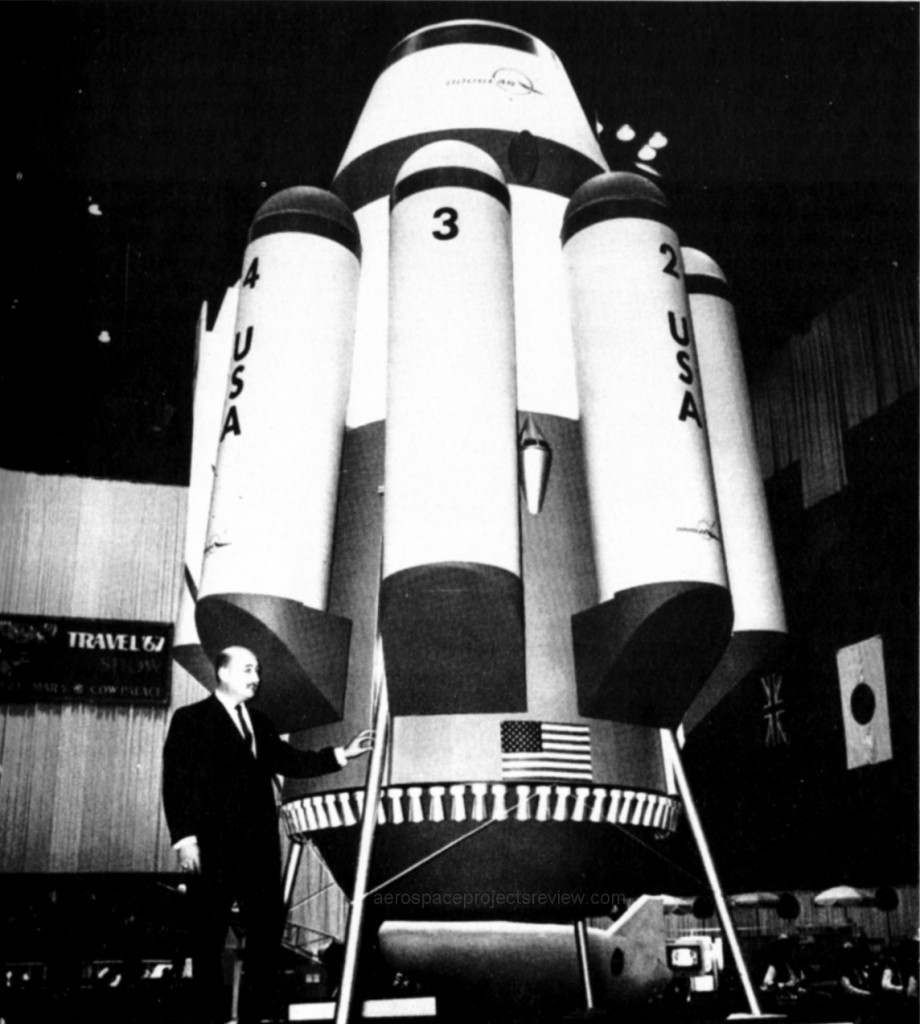
More on the ICARUS/Ithacus, along with the related ROMBUS space launch booster, can be found in Aerospace Projects Review issue V2N6.
Seemed to go reasonably well. Some reports later that my audio faded in and out… I can only assume that my phone was either on the fritz, or perhaps the phone line itself was a bit screwy. Anyway, you can download it in MP3 format here:
http://archived.thespaceshow.com/shows/2134-BWB-2013-12-02.mp3
If you have a question raised specifically by the interview, you can ask it either here, or at the Space Show blog:
http://thespaceshow.wordpress.com/2013/12/03/scott-lowther-monday-12-2-13/
One minor correction: I was asked what the first US bomber was. I seemed to recall that the US dropped bombs from biplanes during the Pancho Villa expeditions of 1916; I was close, as there were Curtis biplanes modified to drop small incendiaries sent to Mexico, but the bombs were not dropped.
At some point I’ll have to listen to it myself, if for no other reason than to see if I can hear the feline cage match that took place right near me near the end of the interview… I guess Buttons and Speedbump decided that I wasn’t paying enough attention to them.
An early 1970’s Lockheed concept for a fully reusable shuttle. Shown here is the orbiter, a minimum-mass, low-cross-range design with a vast fuselage and relatively tiny wings. The system used a reusable flyback booster for the first stage. Far more information is available on this and related concepts in Aerospace Projects Review issue V3N2 and V3N2 Addendum, available HERE.
